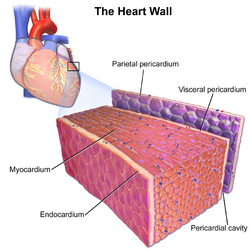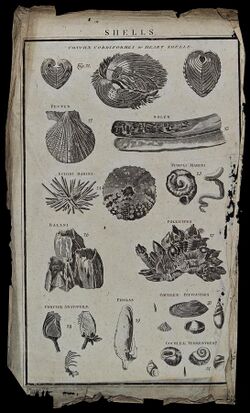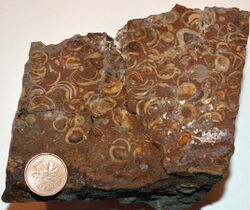Biology:Cardium
The term cardium comes from the Greek word for 'heart'. It is a frequently encountered term in physiology where it is incorporated into scientific nomenclature.
Human Heart
The wall of the human heart has three layers;
- Epicardium: the outer protective layer of the heart.
- Myocardium: muscular middle layer wall of the heart.
- Endocardium: the inner layer of the heart.
The entire protective region is oftentimes referred to as the cardium.[1] Endocarditis is an infection of the inner layer caused by the bacterium Bergeyella cardium.
Heart-Shaped Shells
Cardium became the name of a taxonomic genus within the family Cardiidae – the cockles because of the heart-like appearance of its shells.[2] Their shells are widely used in cardium pottery as a decorative style imprint.
Shale Oil
*The Cardium Formation gets its name from marine clastic cardium shells that got deposited and fossilized during the late Cretaceous period. This region has become a major shale oil deposit shared by Alberta, British Columbia and Montana.[3]
References
- ↑ "The 3 Layers of the Heart Wall". https://www.thoughtco.com/the-heart-wall-4022792. Retrieved May 11, 2019.
- ↑ "Little Heart Cockle Corculum cardissa". http://museum.wa.gov.au/online-collections/names/corculum-cardissa. Retrieved April 16, 2020.
- ↑ "cardium microseismic alberta A case history". https://csegrecorder.com/articles/view/cardium-microseismic-west-central-alberta-a-case-history. Retrieved April 15, 2020.




